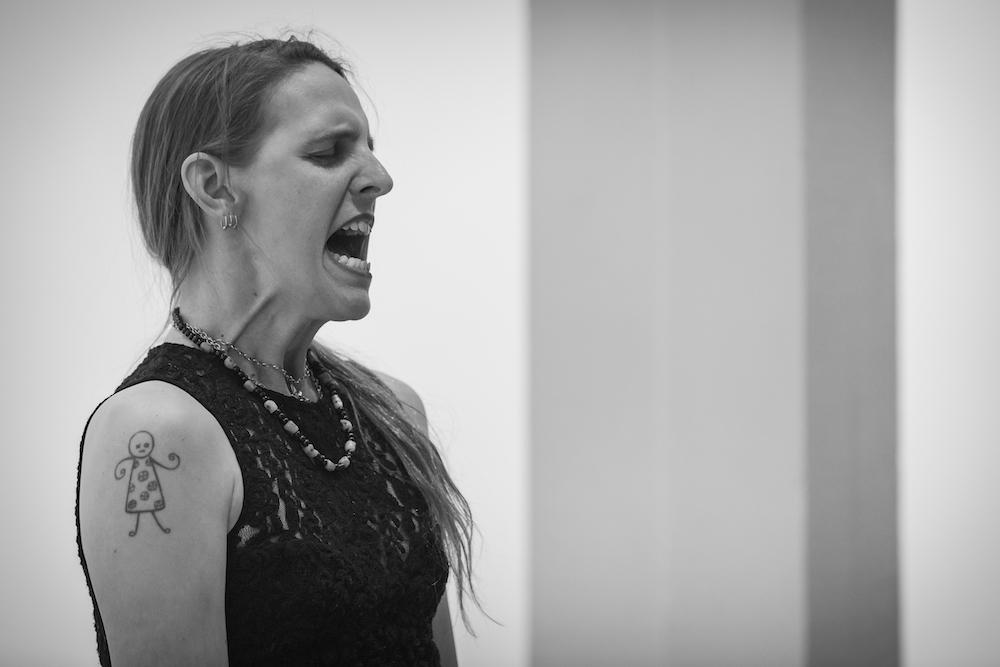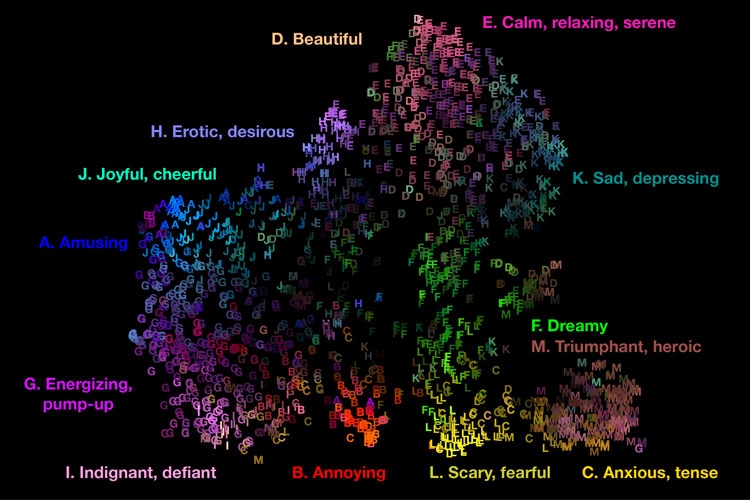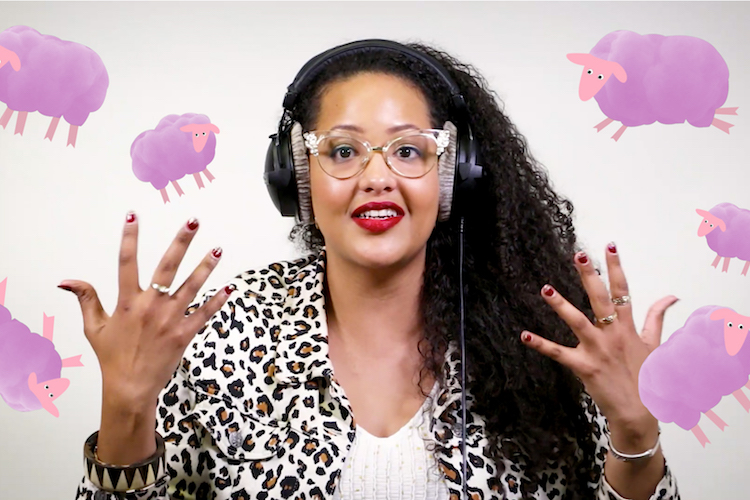Today our creative prompt comes from Sage Pbbbt, an experimental vocalist whose practice is influenced by Tuvan and Mongolian overtone singing, Inuit throat singing, and a strong interest in ritual.
What we’re making today
Sage’s prompt is based on the idea of connecting to different emotions in performance. They’ve asked us to try exploring this by actually moving into different spaces in the room, or facing different directions – so there’s a physical aspect to today’s task as well!
Sage has asked us to create two circles on the ground, and a neutral space outside of these circles. You can imagine these spaces, but it can also be really powerful to actually outline these on the floor somehow to make them really clear. You could use string, or pebbles, or something else entirely to show where your different ‘zones’ are.
We’ll be giving each of those circles a particular emotion, and Sage suggests starting with binaries (opposites) to begin. Examples are love and anger, or happy and sad. When you step into the circles, you want to try to play continuously – this could be an improvisation, or a piece of music you know by heart. Try to play it while really feeling the emotion of that circle. When you step into the neutral space, you can either try to play without an emotion, or take a break.
As Sage says, this exercise can seem quite simple on the surface – but there’s a lot to explore here, as both composers and performers! This exercise teaches us a lot about how we represent different emotions musically, and how we might make our audiences feel a particular way. You might think about the kinds of musical materials you use (sets of notes, dynamics, tempo), but it can also be quite interesting to think about your body language. How do we physically show different emotions when we play?
Today’s responses should be at least 1 minute long, but you might like to try playing for a longer time to try moving between different emotions and the neutral space. Please make sure your name is in the title of your sound or video file so we know who to credit!
Sage Pbbbt
Sage Pbbbt’s singing practice takes inspiration from Tuvan and Mongolian overtone singing, Inuit throat singing, sound poetry and an ongoing exploration of extra-normal vocal technique.
Sage also take influence from industrial musick, trance, and drone; insight meditation practice, urban/industrial shamanism and chaos magick; feminist, queer and trans praxis; and Discordianism.
As a researcher, Sage has interests in feminist, queer and trans politics, intersectionality and ethical engagements with postmodern culture(s), with a focus on writing against normative narratives.
For more on Sage, visit https://sagepbbbt.com/.

Extra Credit
An Emotional Sound Map
Earlier in 2020, researchers from UC Berkeley released the results of a huge study into music and emotions, asking more than 2500 participants in the US and China how different songs made them feel. The goal was to investigate if humans have universal emotional responses to particular kinds of music, and the study included music from a range of genres including classical, pop, rock and electronic.
The researchers claim to have discovered 13 key feelings that music evokes, and have created an interactive sound map showing their results. Hovering the mouse over reveals a lot about the kinds of music that makes us joyful, calm, dreamy, sad or annoyed!
More Than a Feeling
Most of us have probably experienced sound giving us some kind of physical or emotional response. Your favourite song might cheer you up, certain sounds might make the hairs on the back of your neck stand up – but for some people, music causes an entirely different sensory experience.
Synaesthesia is a neurological trait where the person experiences a sensory stimulus that triggers a different sense. For some synaesthetes, sounds are linked to the experience particular colours.
In this video, ABC Classic FM presenter Stéphanie Kabanyana explains what it’s like to experience music with extra senses.










